Wireless Body Area Network for Preventing Self-Inoculation Transmission of Respiratory Viral Diseases
Abstract
:1. Introduction
2. Methods
2.1. Face Touching
2.2. Wireless Body Area Network for Preventing Face-Touching Habits
- two bracelets (B1 and B2) containing the body area network modules equipped with a microcontroller, transceiver, and vibrator (buzzer). Alternatively, the system can comprise just one bracelet placed on the dominant wrist.
2.3. Analysis of Gesture-Related RSSI Measurements
- nose
- eye
- ear
- lips
- hair
- hand movement during standard walk
- opening the doors
- putting a book on the shelf
- shoulder scratching
- elbow scratching
- hand waving ’bye’.
2.4. Signal Classification
3. Conclusions
Author Contributions
Funding
Institutional Review Board Statement
Informed Consent Statement
Data Availability Statement
Acknowledgments
Conflicts of Interest
References
- Remuzzi, A.; Remuzzi, G. COVID-19 and Italy: What next? Lancet 2020, 395, 1225–1228. [Google Scholar] [CrossRef] [PubMed]
- World Health Organization. Coronavirus Disease 2019 (COVID-19): Situation Report, 67; Technical Report; World Health Organization: Geneva, Switzerland, 2020. [Google Scholar]
- van Doremalen, N.; Bushmaker, T.; Morris, D.H.; Holbrook, M.G.; Gamble, A.; Williamson, B.N.; Tamin, A.; Harcourt, J.L.; Thornburg, N.J.; Gerber, S.I.; et al. Aerosol and surface stability of SARS-CoV-2 as compared with SARS-CoV-1. N. Engl. J. Med. 2020, 382, 1564–1567. [Google Scholar] [CrossRef] [PubMed]
- Kwok, Y.L.A.; Gralton, J.; McLaws, M.L. Face touching: A frequent habit that has implications for hand hygiene. Am. J. Infect. Control 2015, 43, 112–114. [Google Scholar] [CrossRef] [PubMed]
- Macias, A.; De la Torre, A.; Moreno-Espinosa, S.; Leal, P.; Bourlon, M.; Ruiz-Palacios, G. Controlling the novel A (H1N1) influenza virus: Don’t touch your face! J. Hosp. Infect. 2009, 73, 280–281. [Google Scholar] [CrossRef] [PubMed]
- Wertheim, H.F.; Melles, D.C.; Vos, M.C.; van Leeuwen, W.; van Belkum, A.; Verbrugh, H.A.; Nouwen, J.L. The role of nasal carriage in Staphylococcus aureus infections. Lancet Infect. Dis. 2005, 5, 751–762. [Google Scholar] [CrossRef]
- Beyan, C.; Bustreo, M.; Shahid, M.; Bailo, G.L.; Carissimi, N.; Del Bue, A. Analysis of face-touching behavior in large scale social interaction dataset. In Proceedings of the 2020 International Conference on Multimodal Interaction, Utrecht, The Netherlands, 11–15 October 2020; pp. 24–32. [Google Scholar]
- Liebst, L.S.; Ejbye-Ernst, P.; de Bruin, M.; Thomas, J.; Lindegaard, M.R. Face-touching behaviour as a possible correlate of mask-wearing: A video observational study of public place incidents during the COVID-19 pandemic. Transbound. Emerg. Dis. 2021, 69, 1319–1325. [Google Scholar] [CrossRef]
- Chen, Y.J.; Qin, G.; Chen, J.; Xu, J.L.; Feng, D.Y.; Wu, X.Y.; Li, X. Comparison of face-touching behaviors before and during the coronavirus disease 2019 pandemic. JAMA Netw. Open 2020, 3, e2016924. [Google Scholar] [CrossRef]
- Shiraly, R.; Shayan, Z.; McLaws, M.L. Face touching in the time of COVID-19 in Shiraz, Iran. Am. J. Infect. Control 2020, 48, 1559–1561. [Google Scholar] [CrossRef]
- Lucas, T.L.; Mustain, R.; Goldsby, R.E. Frequency of face touching with and without a mask in pediatric hematology/oncology health care professionals. Pediatr. Blood Cancer 2020, 67, e28593. [Google Scholar] [CrossRef]
- Sax, H.; Allegranzi, B.; Uckay, I.; Larson, E.; Boyce, J.; Pittet, D. ‘My five moments for hand hygiene’: A user-centred design approach to understand, train, monitor and report hand hygiene. J. Hosp. Infect. 2007, 67, 9–21. [Google Scholar] [CrossRef]
- Clack, L.; Scotoni, M.; Wolfensberger, A.; Sax, H. “First-person view” of pathogen transmission and hand hygiene–use of a new head-mounted video capture and coding tool. Antimicrob. Resist. Infect. Control 2017, 6, 108. [Google Scholar] [CrossRef]
- Mckay, K.J.; Shaban, R.Z.; Ferguson, P. Hand hygiene compliance monitoring: Do video-based technologies offer opportunities for the future? Infect. Dis. Health 2020, 25, 92–100. [Google Scholar] [CrossRef]
- Miller, E.; Banerjee, N.; Zhu, T. Smart homes that detect sneeze, cough, and face touching. Smart Health 2021, 19, 100170. [Google Scholar] [CrossRef]
- Michelin, A.M.; Korres, G.; Ba’ara, S.; Assadi, H.; Alsuradi, H.; Sayegh, R.R.; Argyros, A.; Eid, M. FaceGuard: A Wearable System To Avoid Face Touching. Front. Robot. AI 2021, 8, 47. [Google Scholar] [CrossRef]
- Marullo, S.; Baldi, T.L.; Paolocci, G.; D’Aurizio, N.; Prattichizzo, D. No face-touch: Exploiting wearable devices and machine learning for gesture detection. In Proceedings of the 2021 IEEE International Conference on Robotics and Automation (ICRA), Xi’an, China, 30 May–5 June 2021. [Google Scholar]
- Shoaib, M.; Bosch, S.; Scholten, H.; Havinga, P.J.; Incel, O.D. Towards detection of bad habits by fusing smartphone and smartwatch sensors. In Proceedings of the 2015 IEEE International Conference on Pervasive Computing and Communication Workshops (PerCom Workshops), St. Louis, MO, USA, 23–27 March 2015; pp. 591–596. [Google Scholar]
- Bai, C.; Chen, Y.P.; Wolach, A.; Anthony, L.; Mardini, M.T. Using Smartwatches to Detect Face Touching. Sensors 2021, 21, 6528. [Google Scholar] [CrossRef]
- Slightlyrobot. Available online: https://slightlyrobot.com/ (accessed on 9 April 2020).
- ShockBIT. Available online: https://hackaday.io/project/170429-shockbit (accessed on 9 April 2020).
- D’Aurizio, N.; Baldi, T.L.; Paolocci, G.; Prattichizzo, D. Preventing undesired face-touches with wearable devices and haptic feedback. IEEE Access 2020, 8, 139033–139043. [Google Scholar] [CrossRef] [PubMed]
- Baldi, T.L.; D’Aurizio, N.; Paolocci, G.; Marullo, S.; Prattichizzo, D. Wearable haptic solutions to deal with covid-19 pandemic. In Proceedings of the 2020 I-RIM Conference, Rome, Italy, 10–12 December 2020. [Google Scholar]
- Kakaraparthi, V.; Shao, Q.; Carver, C.J.; Pham, T.; Bui, N.; Nguyen, P.; Zhou, X.; Vu, T. FaceSense: Sensing Face Touch with an Ear-worn System. Proc. ACM Interact. Mob. Wearable Ubiquitous Technol. 2021, 5, 1–27. [Google Scholar] [CrossRef]
- nRF52840 DK. Available online: https://www.nordicsemi.com/Products/Development-hardware/nrf52840-dk (accessed on 19 October 2021).
- Townsend, K.; Cufí, C.; Davidson, R. Getting Started with Bluetooth Low Energy: Tools and Techniques for Low-Power Networking; O’Reilly Media, Inc.: Sebastopol, CA, USA, 2014. [Google Scholar]
- Li, Y.; Wen, P.P. Clustering technique-based least square support vector machine for EEG signal classification. Comput. Methods Programs Biomed. 2011, 104, 358–372. [Google Scholar]
- Morita, K.; Hashimoto, K.; Ogata, M.; Tsutsumi, H.; Tanabe, S.i.; Hori, S. Measurement of Face-touching Frequency in a Simulated Train. In Proceedings of the E3S Web of Conferences; EDP Sciences: Les Ulis, France, 2019; Volume 111. [Google Scholar]
- Hasan, K.; Biswas, K.; Ahmed, K.; Nafi, N.S.; Islam, M.S. A comprehensive review of wireless body area network. J. Netw. Comput. Appl. 2019, 143, 178–198. [Google Scholar] [CrossRef]
- Taleb, H.; Nasser, A.; Andrieux, G.; Charara, N.; Motta Cruz, E. Wireless technologies, medical applications and future challenges in WBAN: A survey. Wirel. Netw. 2021, 27, 5271–5295. [Google Scholar] [CrossRef]
- Lo Presti, D.; Carnevale, A.; D’Abbraccio, J.; Massari, L.; Massaroni, C.; Sabbadini, R.; Zaltieri, M.; Di Tocco, J.; Bravi, M.; Miccinilli, S.; et al. A multi-parametric wearable system to monitor neck movements and respiratory frequency of computer workers. Sensors 2020, 20, 536. [Google Scholar] [CrossRef] [PubMed]
- Alshurafa, N.; Kalantarian, H.; Pourhomayoun, M.; Liu, J.J.; Sarin, S.; Shahbazi, B.; Sarrafzadeh, M. Recognition of nutrition intake using time-frequency decomposition in a wearable necklace using a piezoelectric sensor. IEEE Sens. J. 2015, 15, 3909–3916. [Google Scholar] [CrossRef]
- Hussain, G.; Maheshwari, M.K.; Memon, M.L.; Jabbar, M.S.; Javed, K. A CNN based automated activity and food recognition using wearable sensor for preventive healthcare. Electronics 2019, 8, 1425. [Google Scholar] [CrossRef]
- Moore, D.A.; Djugash, J.M.; Ota, Y. Smart Necklace with Stereo Vision and Onboard Processing. U.S. Patent 9,578,307, 21 February 2017. [Google Scholar]
- Hachisu, T.; Suzuki, K. Representing Interpersonal Touch Directions by Tactile Apparent Motion Using Smart Bracelets. IEEE Trans. Haptics 2019, 12, 327–338. [Google Scholar] [CrossRef] [PubMed]
- Seneviratne, S.; Hu, Y.; Nguyen, T.; Lan, G.; Khalifa, S.; Thilakarathna, K.; Hassan, M.; Seneviratne, A. A survey of wearable devices and challenges. IEEE Commun. Surv. Tutor. 2017, 19, 2573–2620. [Google Scholar] [CrossRef]
- Bisio, I.; Delfino, A.; Lavagetto, F.; Sciarrone, A. Enabling IoT for in-home rehabilitation: Accelerometer signals classification methods for activity and movement recognition. IEEE Internet Things J. 2016, 4, 135–146. [Google Scholar] [CrossRef]
- Da Silva, F.G.; Galeazzo, E. Accelerometer based intelligent system for human movement recognition. In Proceedings of the 5th IEEE International Workshop on Advances in Sensors and Interfaces IWASI, Bari, Italy, 13–14 June 2013; pp. 20–24. [Google Scholar]
- Lawrance, A.; Lewis, P. An exponential moving-average sequence and point process (EMA1). J. Appl. Probab. 1977, 14, 98–113. [Google Scholar] [CrossRef]
- Biagetti, G.; Crippa, P.; Falaschetti, L.; Tanoni, G.; Turchetti, C. A comparative study of machine learning algorithms for physiological signal classification. Procedia Comput. Sci. 2018, 126, 1977–1984. [Google Scholar] [CrossRef]
- Kotsiantis, S.B.; Zaharakis, I.; Pintelas, P. Supervised machine learning: A review of classification techniques. Emerg. Artif. Intell. Appl. Comput. Eng. 2007, 160, 3–24. [Google Scholar]
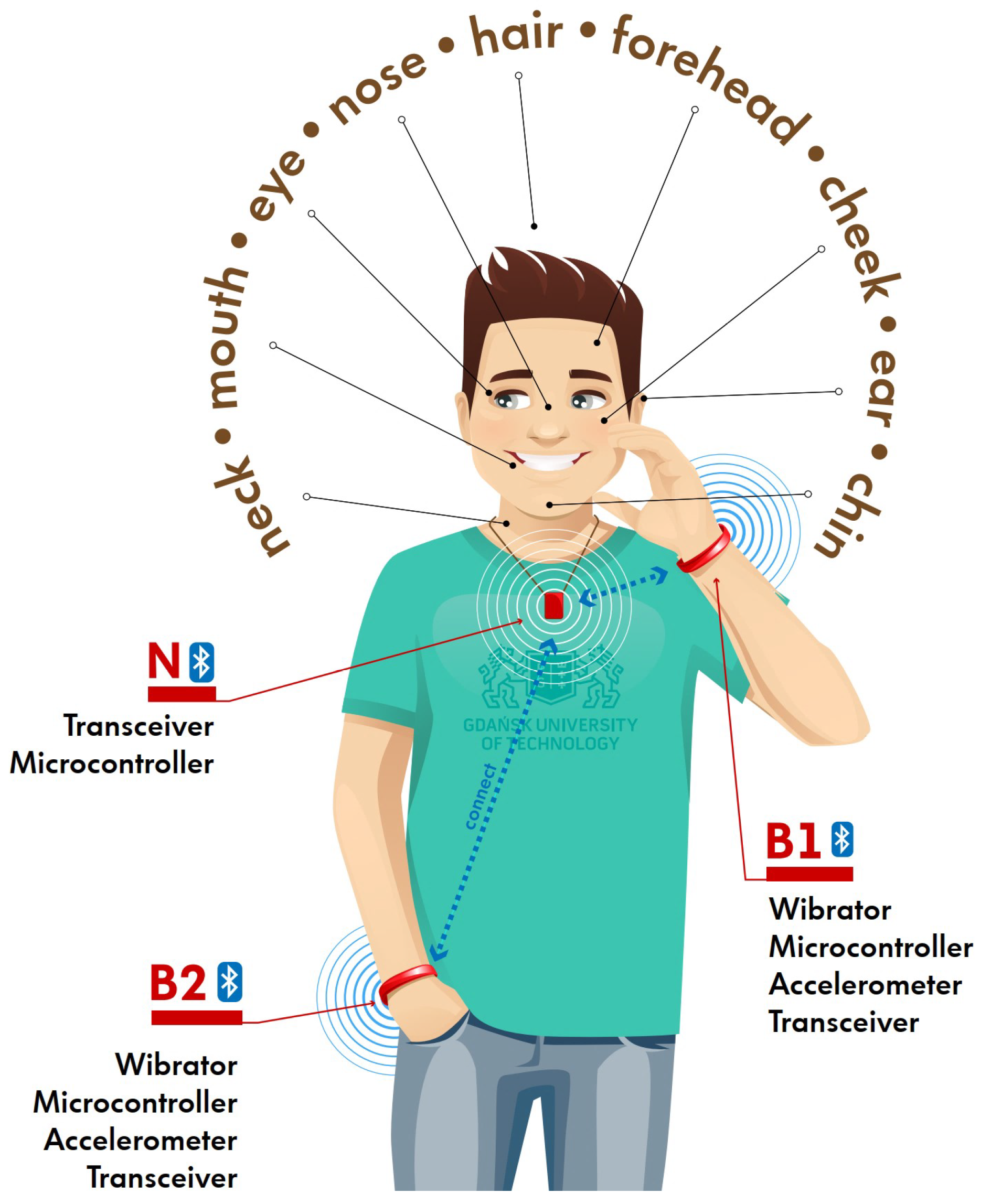
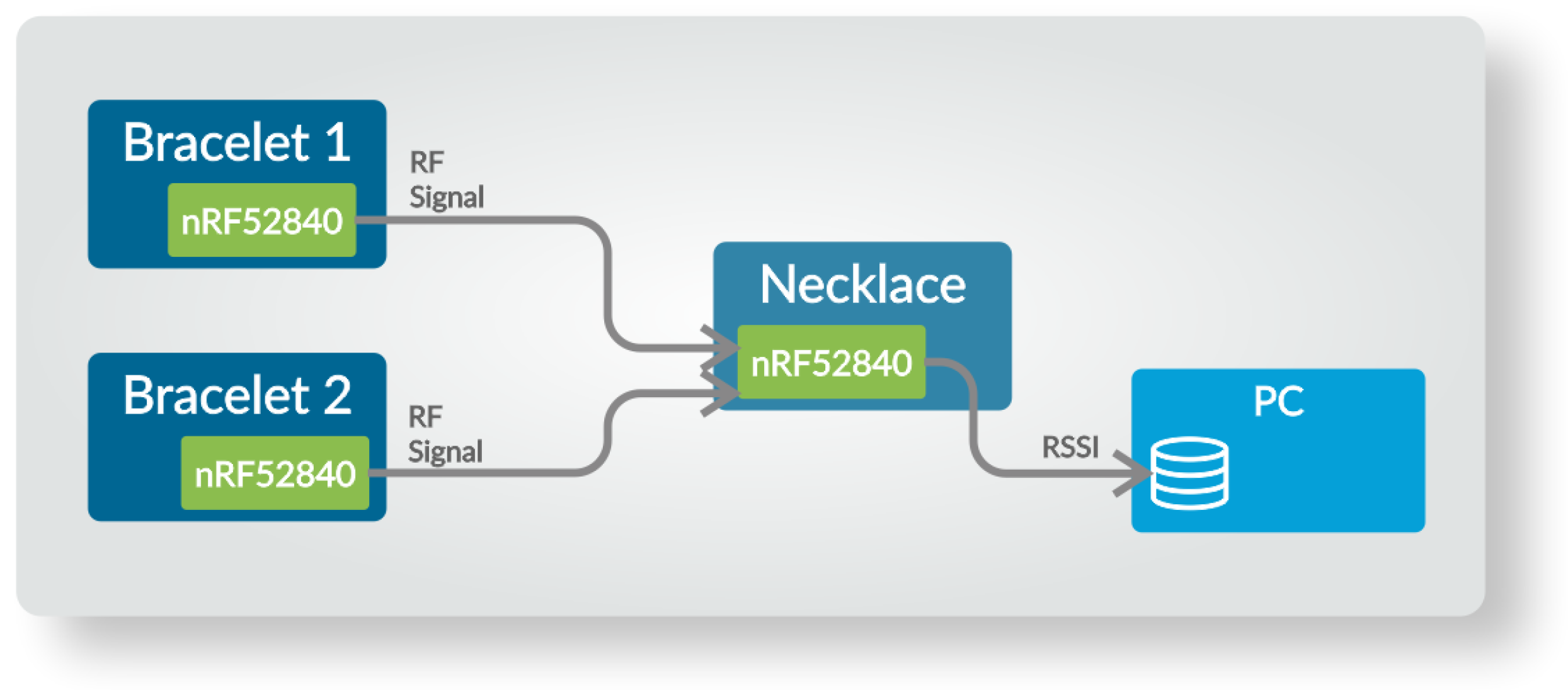
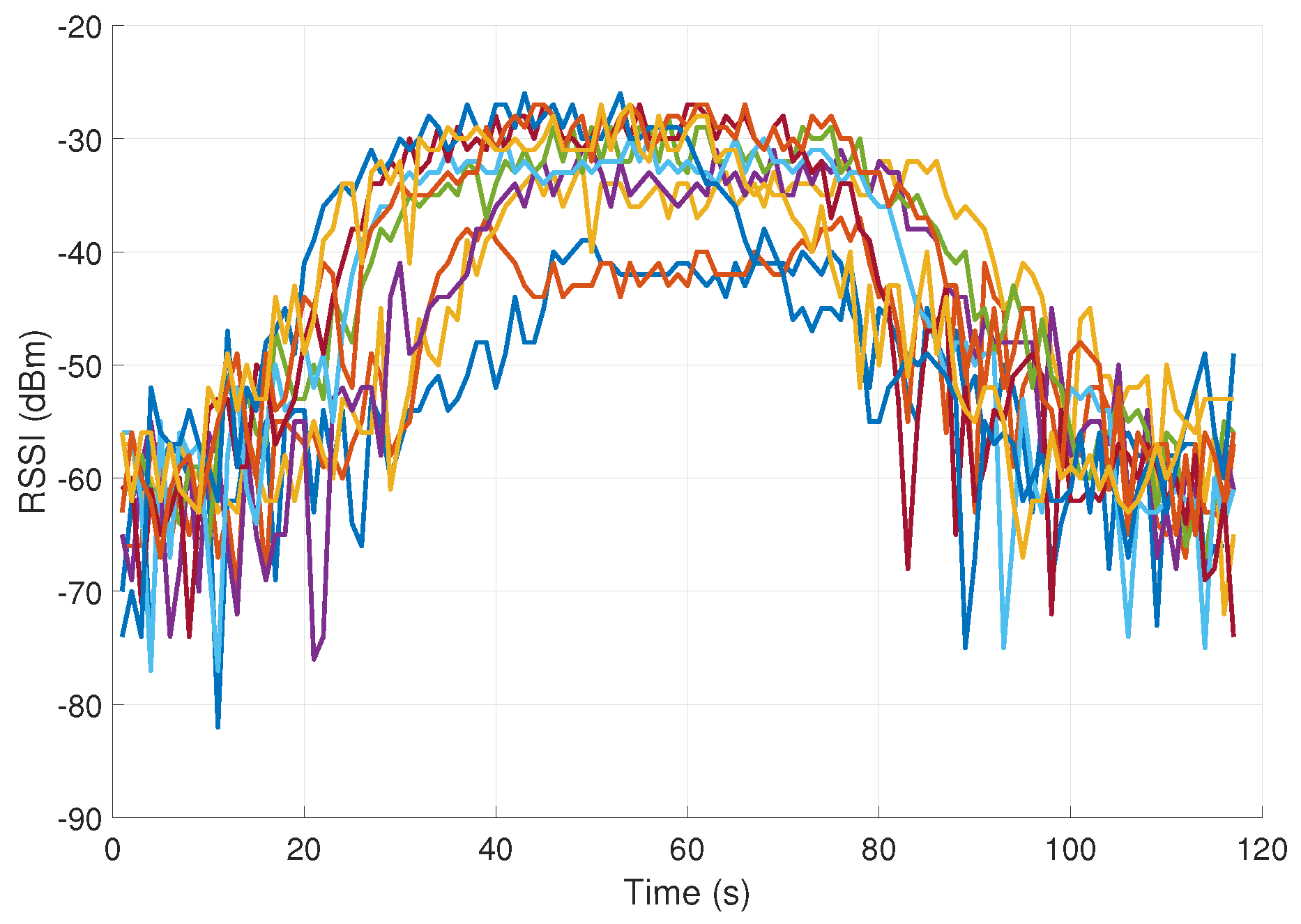
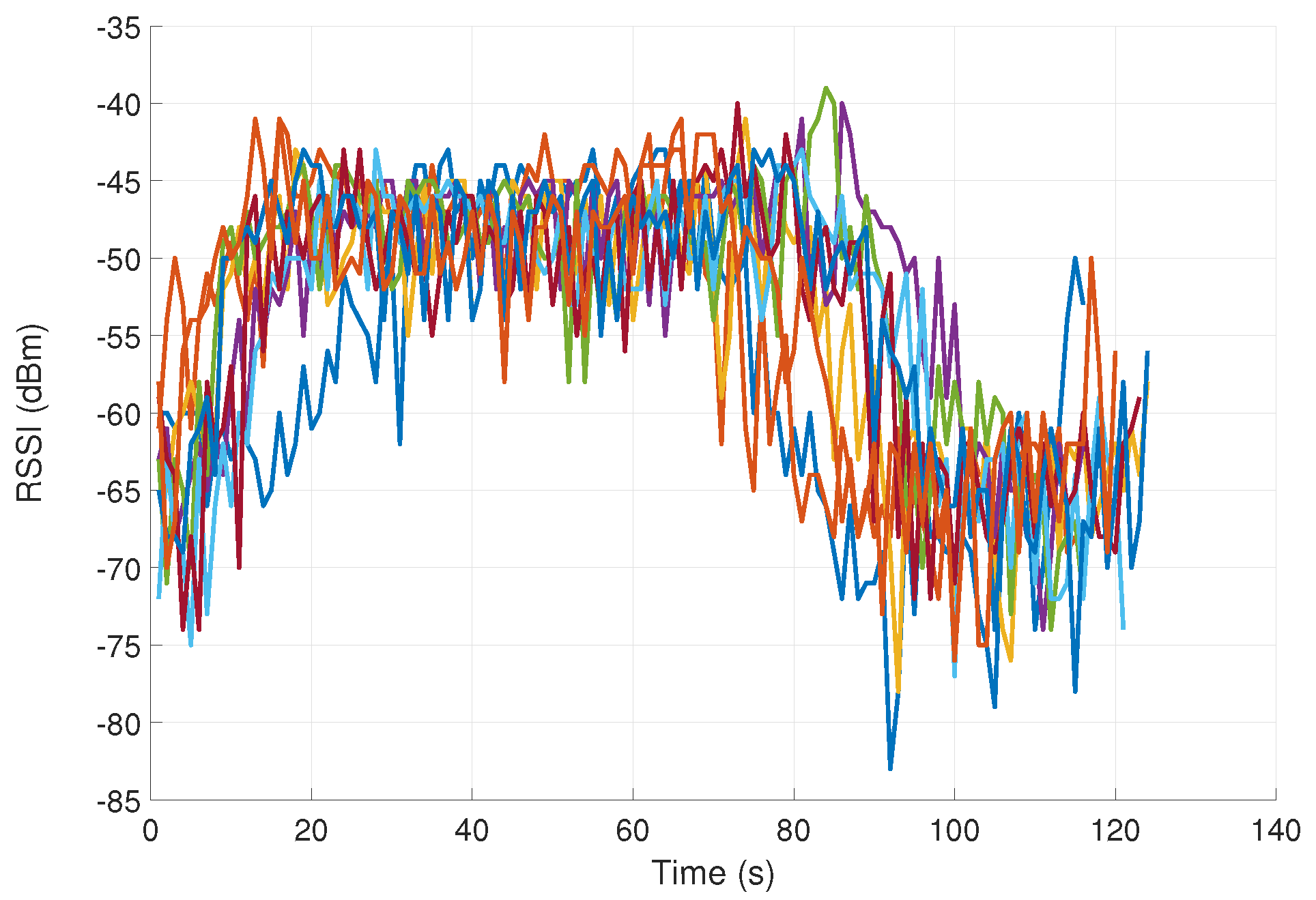
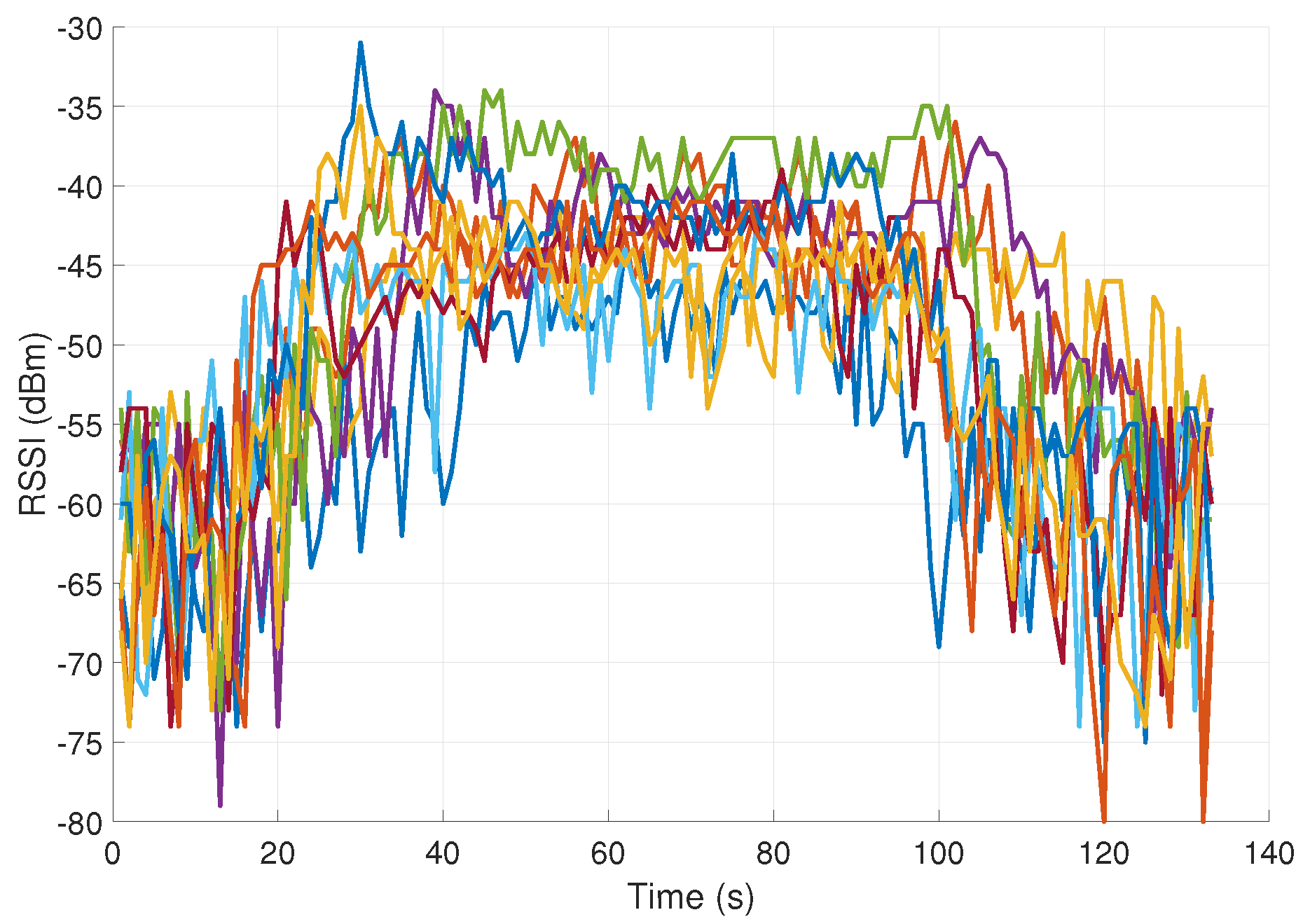
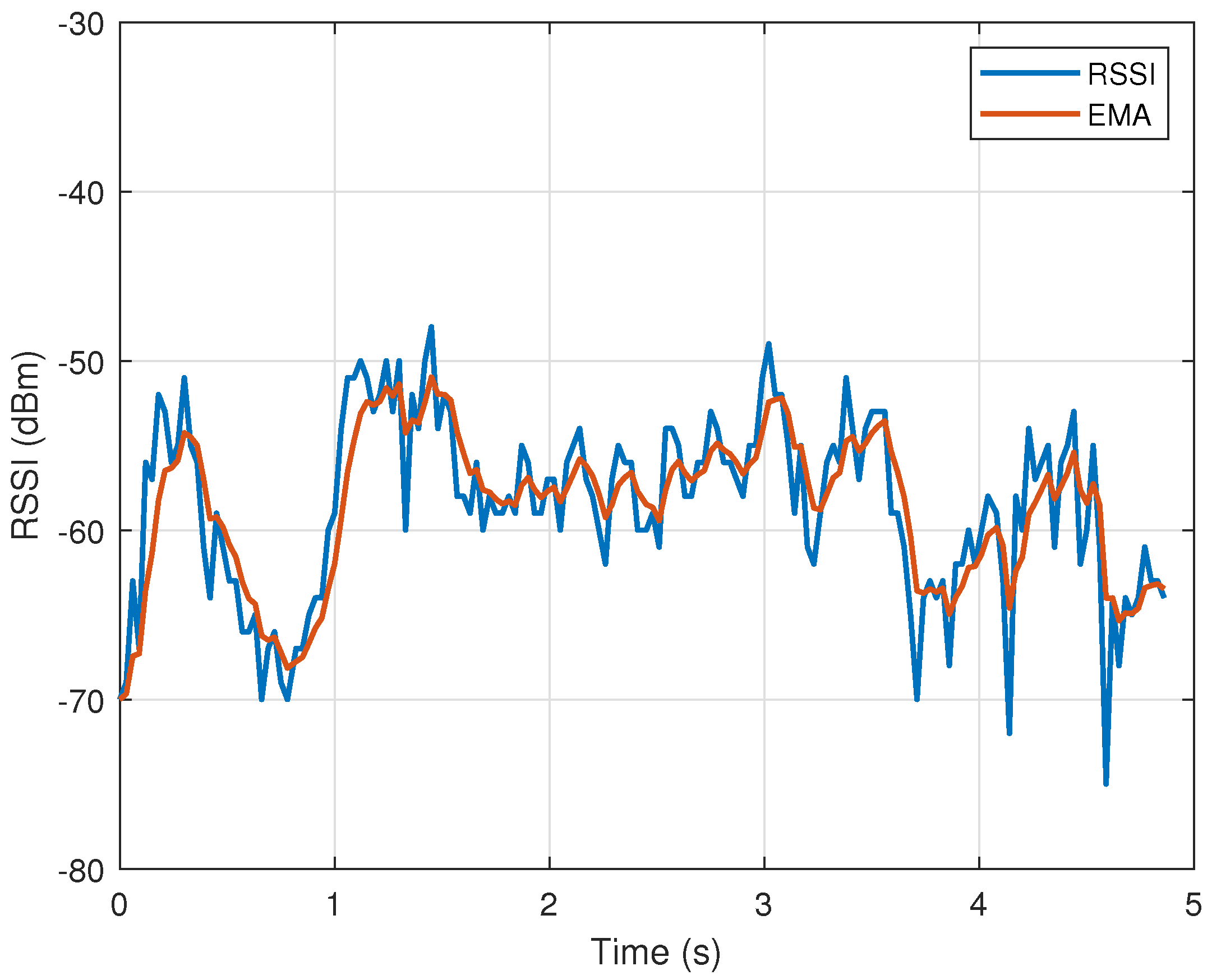

| Area | ||
|---|---|---|
| mouth | 4 | 3 |
| eye | 3 | 1 |
| nose | 3 | 1 |
| hair | 4 | 3 |
| ear | 1 | 3 |
| cheeck | 4 | 5 |
| neck | 1 | 5 |
| chin | 4 | 4 |
| face | 24 | 3.08 |
Disclaimer/Publisher’s Note: The statements, opinions and data contained in all publications are solely those of the individual author(s) and contributor(s) and not of MDPI and/or the editor(s). MDPI and/or the editor(s) disclaim responsibility for any injury to people or property resulting from any ideas, methods, instructions or products referred to in the content. |
© 2023 by the authors. Licensee MDPI, Basel, Switzerland. This article is an open access article distributed under the terms and conditions of the Creative Commons Attribution (CC BY) license (https://creativecommons.org/licenses/by/4.0/).
Share and Cite
Pawlicki, Ł.; Fotyga, A.; Rewieński, J.; Groth, M.; Kulas, Ł.; Fotyga, G. Wireless Body Area Network for Preventing Self-Inoculation Transmission of Respiratory Viral Diseases. Sensors 2023, 23, 2042. https://doi.org/10.3390/s23042042
Pawlicki Ł, Fotyga A, Rewieński J, Groth M, Kulas Ł, Fotyga G. Wireless Body Area Network for Preventing Self-Inoculation Transmission of Respiratory Viral Diseases. Sensors. 2023; 23(4):2042. https://doi.org/10.3390/s23042042
Chicago/Turabian StylePawlicki, Łukasz, Alicja Fotyga, Jakub Rewieński, Mateusz Groth, Łukasz Kulas, and Grzegorz Fotyga. 2023. "Wireless Body Area Network for Preventing Self-Inoculation Transmission of Respiratory Viral Diseases" Sensors 23, no. 4: 2042. https://doi.org/10.3390/s23042042
APA StylePawlicki, Ł., Fotyga, A., Rewieński, J., Groth, M., Kulas, Ł., & Fotyga, G. (2023). Wireless Body Area Network for Preventing Self-Inoculation Transmission of Respiratory Viral Diseases. Sensors, 23(4), 2042. https://doi.org/10.3390/s23042042





